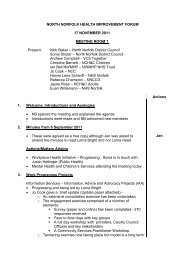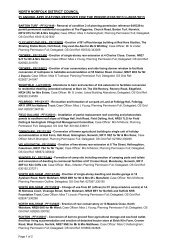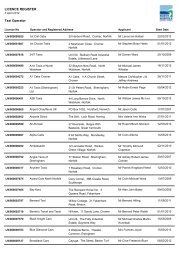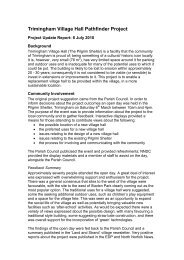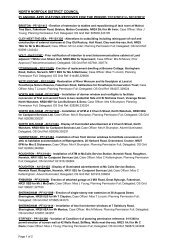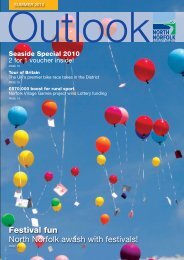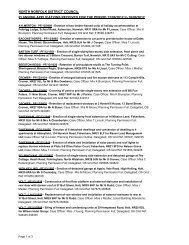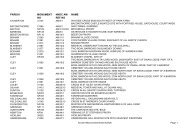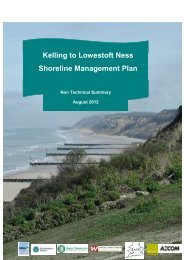NW CA cover:Layout 1 - North Norfolk District Council
NW CA cover:Layout 1 - North Norfolk District Council
NW CA cover:Layout 1 - North Norfolk District Council
- No tags were found...
You also want an ePaper? Increase the reach of your titles
YUMPU automatically turns print PDFs into web optimized ePapers that Google loves.
<strong>North</strong> Walsham Conservation Area Character Appraisal and Management PlanA large commercial building at 20 Market Street was refronted during the inter-war period.This has adopted a number of Arts & Crafts features, such as window arches incorporatingclay tiles. It is an interesting period piece, but the detailing appears clumsy next to theunderstated classicism of the earlier houses nearby.A number of buildings were added to the Paston School during the inter-war period. Theseare mildly attractive, but appear to be inspired mainly by the design of Victorian and Edwardianboard schools.The best work from this time is at the south end of Aylsham Road, where the Arts and Craftsinfluence is used for some late vernacular revival houses with thatched roofs.During the inter-war period, the continuing interest in Arts & Crafts styles encouraged theuse of pantiles for roofs. There is also some evidence of “triple Roman” tiles being used.Post war architecture in the town centre is unremarkable. The St. Nicholas Court is typicalof 1960s shopping arcades, but the design is uninspired, and it has become a neglectedenvironment. There are a few recent and attractive buildings in traditional style, such asAngel Court, and Church End House in Church St. However, most modern imitations oftraditional architecture within the town are badly proportioned and detailed.Shop FrontsShop fronts form an important part of any streetscape, particularly around market places asat <strong>North</strong> Walsham. Despite this, there has been a tendency to undervalue traditional shopfronts, and some good examples have been lost from <strong>North</strong> <strong>Norfolk</strong>’s towns in recent years.It is not clear how many of the older houses along Market Place and Market Street originallyhad shop fronts. Some may have started out as merchant’s houses with a front door andsash windows in the ground floor. Most traditional shop fronts which survive are late Victorianor inter-war, but a few may retain earlier features. The shallow bay windows of 2 MarketPlace could be Regency or early Victorian, but they have probably been considerably alteredor added to over the years.7 Market Place has substantial half-round pilasters with ionic capitals at the sides of itswindows. Elsewhere in <strong>North</strong> <strong>Norfolk</strong>, this style is known from the 1830s-40s, although theoriginal windows would probably have had additional glazing bars and smaller panes ofglass. House of Hobbies, at 24 Market Place has similar pilasters at the sides of its cantedbay windows.The double fronted central shopfront of “Moonshine” could be from the same period –similarshopfronts are recorded from other <strong>North</strong> <strong>Norfolk</strong> towns during the 1870s.60<strong>North</strong> <strong>Norfolk</strong> <strong>District</strong> <strong>Council</strong>




